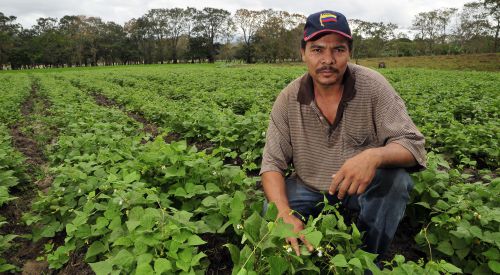
After 1950 the scope of capital-
Commercial agriculture thrives in the Pacific lowlands, where cotton and sugarcane are the staple crops. Although coffee is grown in the Pacific zone at elevations over 1,000 feet (300 meters), the most important coffee zone is the northwestern part of the Central highlands, from Matagalpa to Jinotega. Cattle for the export of beef are raised in the southeastern part of the highlands. The overall expansion of export production by large landholders pushed the smallholders who produced the country’s maize, beans, and other dietary staples onto marginal lands, with the result that food production could not keep up with population increase.
In the 1990s the government initiated efforts to diversify agriculture. Some of the new export-
Nicaragua’s agricultural sector has benefited because of the country’s strong ties to Venezuela. It is estimated that Venezuela will import approximately $200 million in agricultural goods.
Fishing and forestry
Shrimp is one of the main marine export products of the Nicaraguan economy.
Forestry and fishing are the bases of the eastern seaboard’s commercial economy. In national terms, neither sector was important until the take-
Nicaragua’s fishing industry operates off both coasts and in freshwater Lake Nicaragua. The lake also has an aquaculture industry. The most valuable catches are shrimp and spiny lobster. The government expanded the size of the fishing fleet in the 1980s, which permitted a rapid expansion of shrimp and lobster exports in the 1990s. A turtle fishery thrived on the Caribbean coast before it collapsed from overexploitation.
